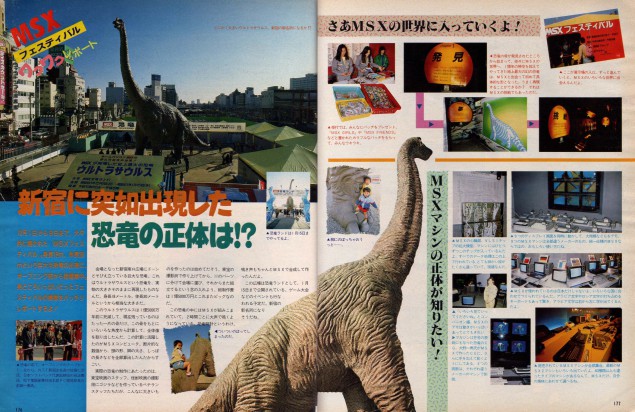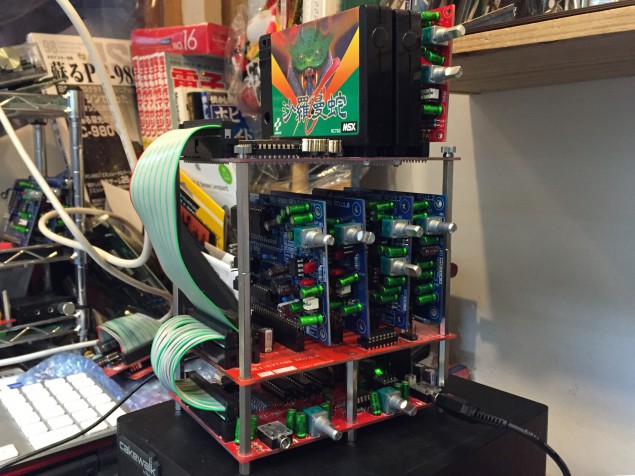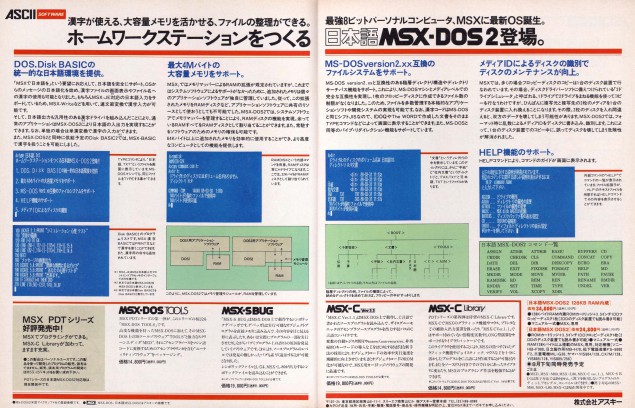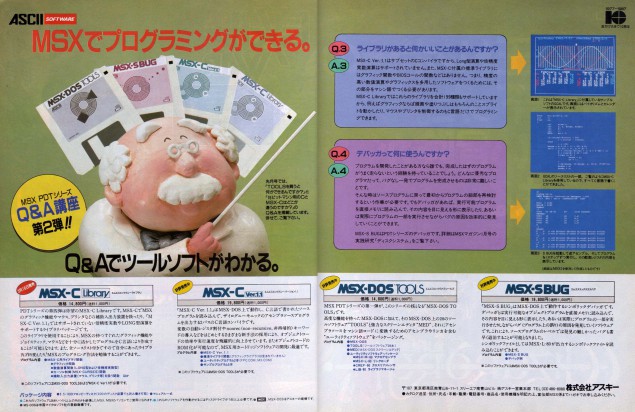Category Archives: MSX
18 meter tall, 30 meter long dinosaur spotted in Shinjuku
Posted by Javi Lavandeira in Fun,Japan,MSX,Retro | January 17, 2015Well, this actually happened almost thirty years ago, and it wasn’t a real dinosaur.
For years I’d been hearing about the dinosaur that Mr. Kazuhiko Nishi planted in the middle of Shinjuku to commemorate one million MSX computers sold. However, I never saw any real, detailed information about this, so I kept it inside the “Unverified stories that may or may not be true” drawer inside my brain.
Recently, while reading old MSX Magazines I came across a report about this event, so here’s a report on the report.
Read more ›RE:birth
Posted by Javi Lavandeira in Fun,Gadgets,Hardware,Japan,MSX,Retro,Technology | January 15, 2015Today I had to go to Akihabara for work and something caught my attention in an electronics shop not far from the station:
In the background there was playing one of Salamander‘s themes, with perfect timing and perfect instruments. Initially I thought this was a custom-built MSX computers, but it wasn’t.
Keep reading for the details.
Read more ›Relearning MSX #11: The KID (AKID) text editor (part 2)
Posted by Javi Lavandeira in MSX,Retro,Technology | January 13, 2015In the previous post we saw the four menus assigned to the function keys F1 through F4 in the KID/AKID text editors. I left the F5 key for this post because it has a different function: copy and paste blocks of text. I’m going to explain now how to do that, and also some of the keyboard shortcuts available in the editor.
As in the previous post, everything I write about AKID also applies to KID and vice versa, unless I say otherwise. Again, I’ll be using a copy of the CURSESC.C file from the MSX-C Library disk in the examples.
F5: Copying, duplicating and deleting blocks of text
This menu supports three commands:
- C: Copy a block of text to the clipboard (discards the previous clipboard contents)
- A: Adds a block of text to whatever is in the clipboard
- X: Deletes a block of text from the screen and copies it to the clipboard
Unlike the other menus, nothing will appear in the top of the screen when you press F5. Instead, the editor will change to select mode. If there’s text in the line where the cursor is, then the whole line will be highlighed (it will reverse color). At this point you can select more lines of text by moving the cursor, but be aware that you can’t select any text above the current position of the cursor.
After you’ve selected the text you’re interested in you can press C, A or X to apply any of the three commands. ESC cancels the operation and brings you back to edit mode.
By default the keyboard shortcut for pasting the clipboard is . For some reason this key combination doesn’t work properly in my openMSX setup (a Mac with a Japanese keybard), so I’ve changed the shortcut to CTRL-D. I”ll explain later how to change the default shortcuts.
Here’s a video showing this in action:
Read more ›Relearning MSX #10: The KID (AKID) text editor (part 1)
Posted by Javi Lavandeira in MSX,Retro,Technology | January 11, 2015In the last few posts we saw how to install MSX-DOS2, MSX-DOS2 TOOLS and MSX-C v1.2. This is what we’ve done so far:
- Setting up the MSX-C environment, part 1: Emulator setup (openMSX)
- Setting up the MSX-C environment, part 2: Hard disk partitions and MSX-DOS2 install
- Setting up the MSX-C environment, part 3: Install MSX-DOS2 TOOLS
- Setting up the MSX-C environment, part 4: Install MSX-C v1.2
- Setting up the MSX-C environment, part 5: Install MSX-C Library
At this point we can already compile C programs, but the process is annoying and involves lots of typing. The next obvious step is prepare a script to do the work for us, and will require using a text editor. Since I’m assuming no previous experience, I’m going to explain the text editor included in MSX-DOS2 TOOLS, AKID (and its sibling KID) before we prepare our compile scripts.
You can skip this post if you’re already familiar with KID/AKID, or if you prefer to use a different text editor that you’re already familiar with.
What’s exactly a text editor?
Simply put, a text editor is a program to enter plain text in a computer and save it into a text file. Plain text consists just of normal characters: letters, numbers, punctuation marks, newlines, etc.
Do not confuse a text editor with a word processor. A word processor includes extra information in the files it generates. This information may be font names, colors, styles, file version numbers, maybe charts and images, etc.
Read more ›Relearning MSX #9: Setting up the MSX-C environment (part 5)
Posted by Javi Lavandeira in How-to,MSX,Retro | January 6, 2015In this post we’ll add the MSX-C Library package to our MSX-C environment. Setting it up is trivial because it only involves copying a few files, as was the case of installing MSX-DOS2 TOOLS.
Let’s start.
What’s MSX-C Library?
MSX-C Library is a collection of C source files and libraries that extend the capabilities of MSX-C v1.1/v1.2. It adds support for a lot of stuff:
- 32-bit and 64-bit numeric types, modifies some of the standard library functions to support them, including the printf() and scanf() groups of functions
- Support for the MSX graphics processor (VDP) including drawing on the screen, graphic block operatings, data transfer to/from the video memory, and handling sprites
- Functions to work with joysticks, cursor keys, triggers, mice and printer
- A subset of the curses library called MSX-CURSES, to create menus and windows in text-based applications
As you can guess, it’s going to be quite useful.
One thing to note is that, unlike the other software packages in the MSX PDT series (MSX-C, MSX-DOS TOOLS, MSX-S BUG), there isn’t a version especific for MSX-DOS2. The same MSX-C Library package works with both MSX-C v1.1 and v1.2.
Read more ›Relearning MSX #8: Setting up the MSX-C environment (part 4)
Posted by Javi Lavandeira in How-to,MSX,Retro,Technology | January 5, 2015(This is another looooong post. Be sure to click the “Read more” button if you’re previewing this post from the blog summary.)
By the end of the previous post we had MSX-DOS2 and MSX-DOS2 TOOLS installed on an MSX with a hard drive. So far everything is installed in drive A:, the first partition in the hard drive.
In this post we’ll proceed to install ASCII’s MSX-C v1.2. We’ll copy some utilities to the A: drive for convenience, but we will use the B: drive for all the compile environment.
Let’s get started.
MSX-C versions
ASCII released two versions of the MSX-C compiler:
- MSX-C v1.1: runs under either MSX-DOS or MSX-DOS2 and generates code that also works on either operating system, but doesn’t have support for MSX-DOS2 functionality
- MSX-C v1.2: runs on MSX-DOS2, and generates MSX-DOS2 applications, and has full MSX-DOS2 support
We will be using MSX-C v1.2.
Read more ›Relearning MSX #7: Setting up the MSX-C environment (part 3)
Posted by Javi Lavandeira in MSX,Retro,Technology | January 2, 2015At the end of the previous chapter we had a working MSX-DOS2 installation. Those of you using openMSX now have a setup like this:
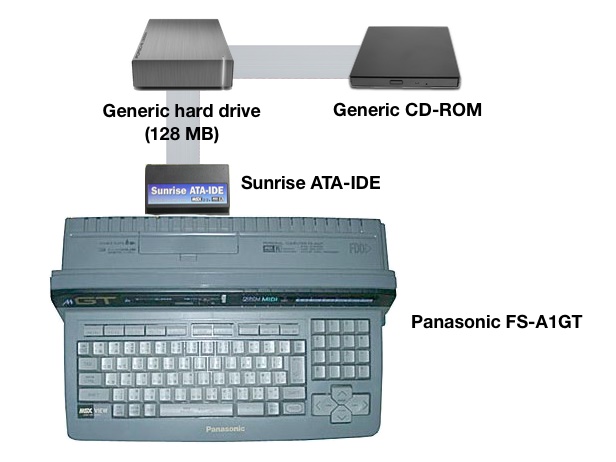
Current MSX setup under openMSX
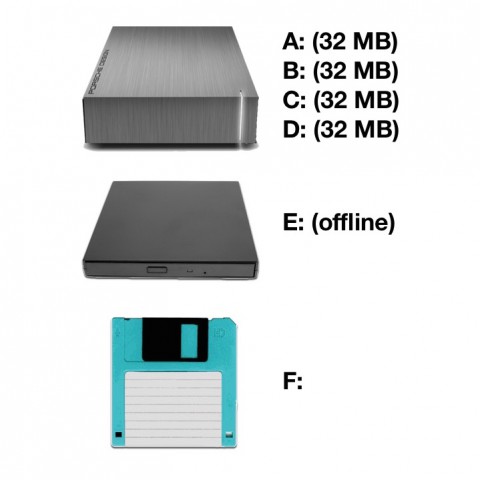
Disk drive names under openMSX
From this point on, the explanations in these series will work the same on an emulator and on a real MSX computer, unless I explicitly point out the differences. One of the things that you’ll have to pay attention to if you’re using your MSX are the drive letters. They may be different in your machine.
Let’s dive in.
Read more ›MoonBlaster Mania (MSX music disk)
Posted by Javi Lavandeira in Gadgets,MSX,Music,Retro | January 2, 2015Another old application programmed by me in 1993 or 1994. This one is a music disk for MSX2 computers (or higher) with at least an FM-PAC. Also supports MSX Audio for stereo sound and digital samples. I thought this was already available in The MSX Archive, but looks like it wasn’t. I’m also releasing this one to the public domain.
Get it here: MoonBlaster_Mania.zip (180 KB)
It works fine under the openMSX emulator with the mbstereo extension.
Most of the songs are by Carlos García. Graphics, code, and the two crappy songs (guess which ones) are all my fault.
NOTE: The samples in the last song (‘Warrior‘) seem to be corrupted. It doesn’t matter much, because we used this same song for the intro of MATRIX.
Thanks Paco for reminding me about this one, and mars2000you for pointing an online archive that still had it!
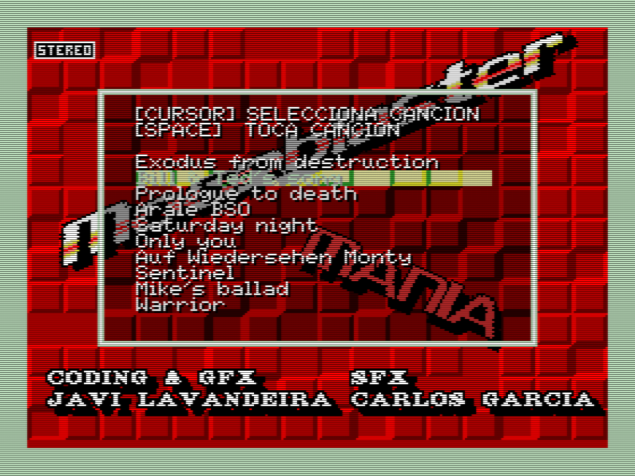
MoonBlaster Mania
MATRIX: Quest for Deliverance (MSX game)
Posted by Javi Lavandeira in Fun,Games,MSX,Retro | December 31, 2014Here’s a game for MSX2 computers that I released on October 1994. It was never released commercially, but I gave copies to friends. I’m now releasing it to the public domain.
The game is just another Breakout / Arkanoid clone. It has great FM-PAC / Music Module music composed by Carlos García. I’m guilty of all the coding and graphics.
It runs fine on the openMSX emulator, but at least on my computer (a 2010 Mac Pro) the timings aren’t correct and the music breaks up a bit. You will need to run the emulator with both the fmpac ROM and the mbstereo extension to be able to listen to the music.
Download the disk image here (now public domain): matrix.zip (206 KB)
Thanks RCastillo for recovering this!
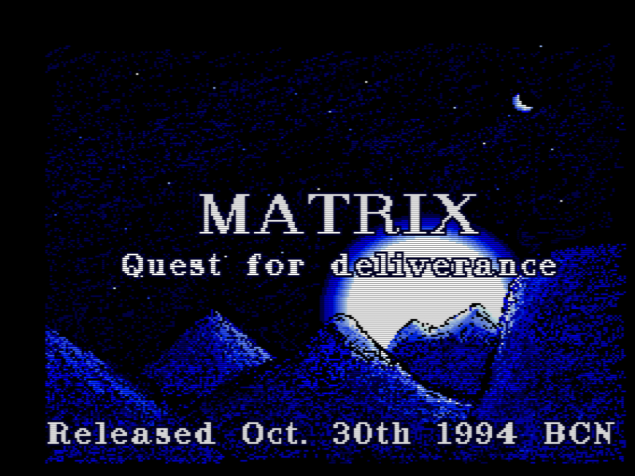
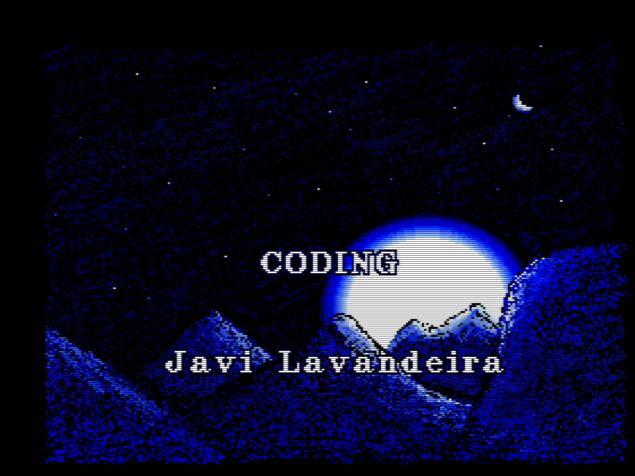
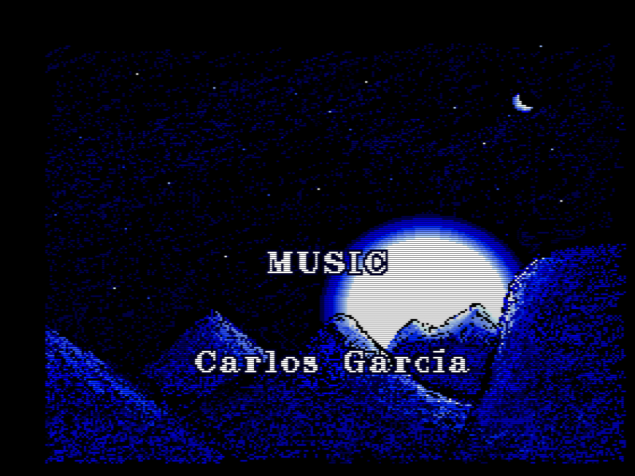
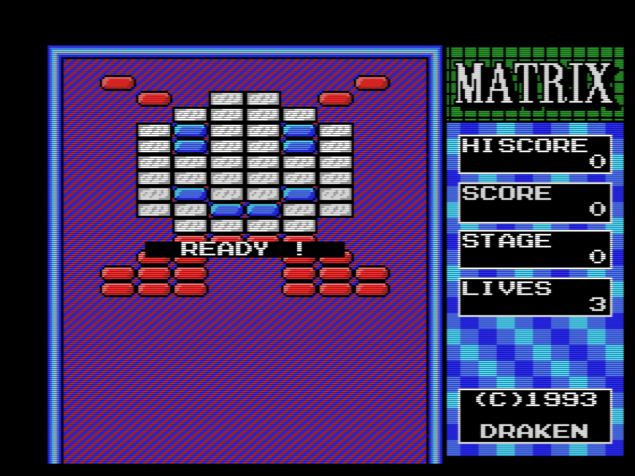
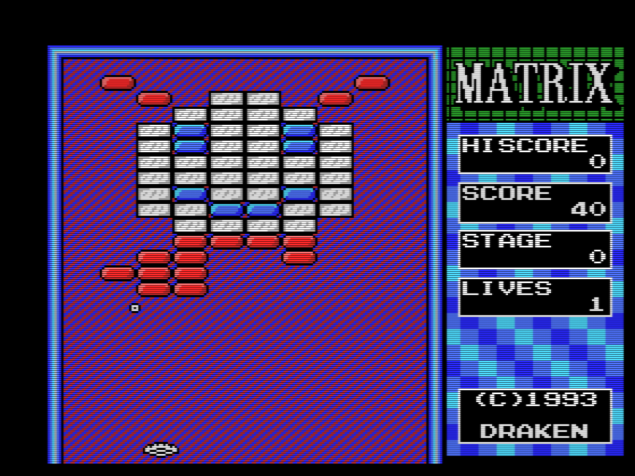
Relearning MSX #6: Setting up the MSX-C environment (part 2)
Posted by Javi Lavandeira in Gadgets,MSX,Retro | December 31, 2014This article has moved to MSX Center.
Click here to visit the new URL.

